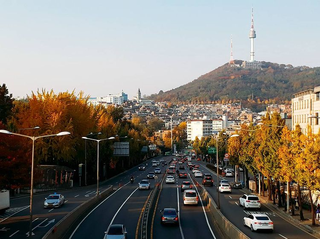
Yongsan District is one of the 25 districts of Seoul, South Korea.
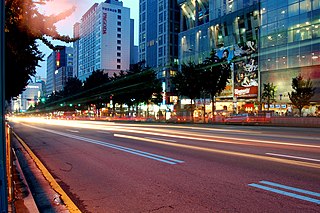
Seodaemun District is one of the 25 districts of Seoul, South Korea.

Gangbuk District is one of the 25 gu which make up the city of Seoul, South Korea. Its name is derived from it being located at the north of Han river. It was created from neighbouring Dobong District in 1995. The current mayor is Park Gyeom-su.
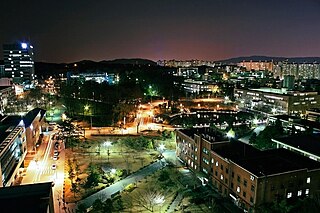
Nowon District (Nowon-gu) is a residential district of Seoul, South Korea, located in the most northeastern part of the metropolitan city. It has the highest population density in Seoul, with 619,509 people living in the area of 35.44 km².

Seongdong District (Seongdong-gu) is one of the 25 gu which make up the city of Seoul, South Korea. It is situated on the north bank of the Han River. It is divided into 20 dong (neighbourhoods).
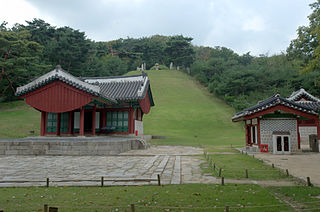
Seongbuk District is one of the 25 districts of Seoul, South Korea. The district is located in the mid-north part of the city. The current mayor is Kim Young-bae (김영배), who has been mayor since July 1, 2010. Seongbuk-gu was established under Presidential Decree No. 159 on August 13, 1949, and was promoted to a autonomous district by implementing a Gu-level local government on May 1, 1988.
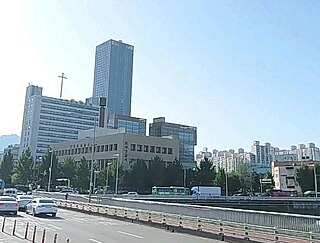
Dobong District is one of the 25 districts of Seoul, South Korea. As of 2020, Dobong has a population of 315,979 and an area of 20.71 square kilometres (8.00 sq mi), and is divided into four administrative neighborhoods. The district is located in northeastern Seoul, bordering the Gyeonggi Province cities of Yangju and Uijeongbu to the north, and the districts of Gangbuk to the southwest and Nowon to the east.

Jungnang District (Jungnang-gu) is one of the 25 gu, or districts, of Seoul, South Korea. It is located on the north side of the Han River.

Taedonggang-guyŏk, or Taedong River District, is one of the 18 guyŏk, and one of the six that constitute East Pyongyang, North Korea. Taedonggang-guyŏk is on the eastern bank of the Taedong River, north of Tongdaewŏn-guyŏk and west of Sadong-guyŏk. It was established in January 1958.

Sadong-guyŏk, or Sadong District, is one of the 18 guyŏk, and one of the six, that constitute East Pyongyang, North Korea. It is on the eastern bank of the Taedong River, and the mouth of the Nam River. It is north of Ryŏkp'o-guyŏk, east of Taedonggang-guyŏk and north east of Tongdaewŏn-guyŏk. It was established in September 1959.

Chang-dong Station is a station on Seoul Subway Line 1 and Line 4. It is located in Chang-dong, Dobong District, Seoul, South Korea. A shopping center was planned for this site, but the empty lot has never been developed due to the bankruptcy of the contractor behind said project. The station is, however, home to a cluster of pojangmacha stalls.

Dobong Station is a metro station on Seoul Subway Line 1. It is in the extreme north of Seoul and offers services connecting the city to the cities to the north in Gyeonggi Province.

Banghak station is a subway station on Line 1 of the Seoul Metropolitan Subway. It is the closest station to the Dobong District Office in Seoul.

Taesŏng-guyŏk, or Taesŏng District is one of the 18 guyok that constitute Pyongyang, North Korea.

Hyŏngjesan-guyŏk, or Hyŏngjesan District is one of the 19 guyŏk that constitute Pyongyang, North Korea.

Man'gyŏngdae-guyŏk or Man'gyŏngdae District (Korean: 만경대구역) is one of the 18 guyŏk (wards) that constitute P'yŏngyang, North Korea. It began as a village called Man'gyŏngdae-ri in South P'yŏngan Province before becoming a district of P'yŏngyang in September 1959. The area is surrounded by several hills, the highest one named Man'gyŏng Hill because one can enjoy a bird's-eye view of the surrounding scenic landscape, and the village at its foot is called Man'gyŏngdae. Man'gyŏngdae was the birthplace of North Korean leader Kim Il Sung.
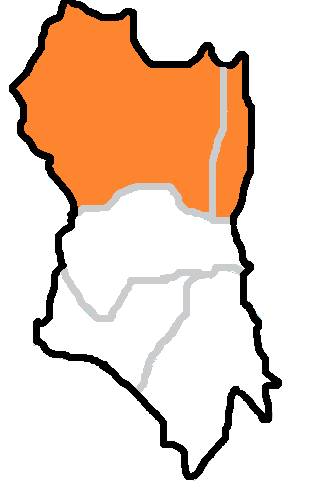
Dobong-dong is a dong (neighborhood) of Dobong District, Seoul, South Korea. The dong is one of the four located in the Dobong District. According to the Köppen–Geiger climate classification system, the region is Dwa, or a humid continental climate. The average temperature is 11.1 °C and approximately 147.5 cm of precipitation falls annually. The postal code for Dobong-dong is 132-010. The region is also referred to as Tobong-dong.

Suyu-dong (Korean: 수유동) is a dong, neighbourhood of Gangbuk-gu in Seoul, South Korea. From June 30 of 2008, six administrative Suyu-dongs were divided to Insu-dong, Ui-dong, and Suyu-dong.

Gyeongun-dong is a dong (neighborhood) of Jongno District, Seoul, South Korea. It is a legal dong governed under its administrative dong, Jongno 1, 2, 3, 4 ga-dong.
Gwanhun-dong is a dong (neighborhood) of Jongno District, Seoul, South Korea. It is a legal dong governed under its administrative dong, Jongno 1, 2, 3, 4 ga-dong.






















